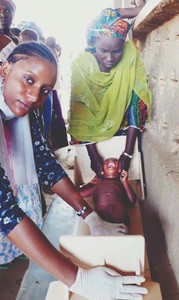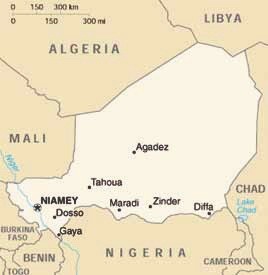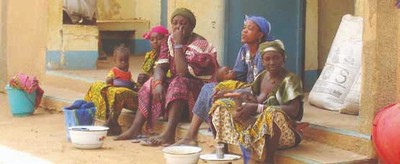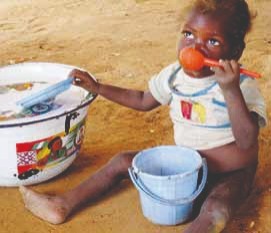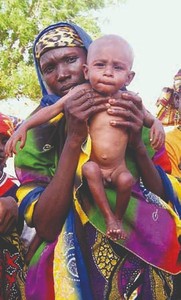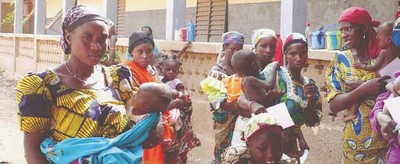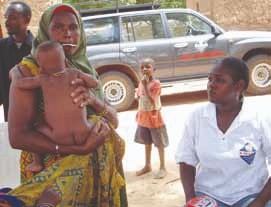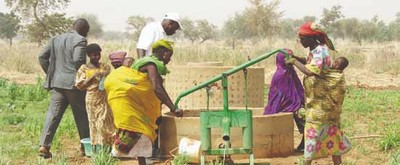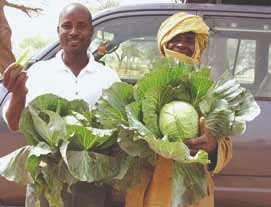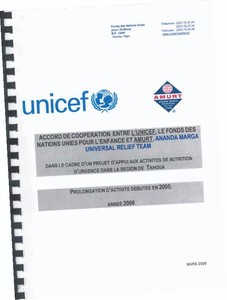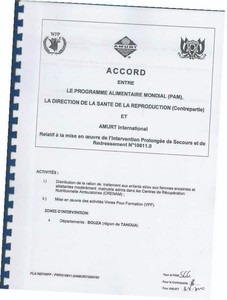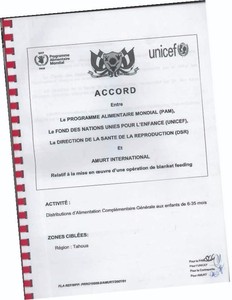
Food distribution, hygiene, water and sanitation and food security, Activities to reinforce livelihood
Project in numbers
| heading of table | |
|---|---|
| label | number |
FACTS AND FIGURES
Facts of Niger
Name: Republic of Niger
Population: 13,435,170*
Births per woman: 7.4 (177th in 177 countries)**
Human Development Indices: 74 (174th out of 177 countries)**
Annual increment ration of population: 3.5 %**
GDP per person: USD 781 **
Adult illiteracy ratio: 70.2%**
Children under weight for age: 44% aged under 5**
Mortality under 1 year old per 1,000: 150 (175th out of 177 countries)**
Population below income poverty line of $2 a day: 85.6%**
Our Intervention Area
Region: Tahoua
Department: Bouza Area: 3,777 km2
Communes: Bouza, Tama, Allakays, Karofane and Tabotaki
Population: 338,440* in Bouza
Population of less than 5 years old: 81,336 (24% of the total)*
Main Tribes: Hausa
Climate: very hot and dry, subtropical with large desert
Living within 5 km from a medical institute: 27%*
Sources:
* Annuaire des Statistiques Sanitaires du Niger Année 2007, Ministre de la Santé Publique
** Human Development Report 2007/2008 by United Nation Development Programme
GOAL AND OBJECTICVES IN NIGER
Our Goal
Improve the nutritional status of children under the age of 5, pregnant women and nursing mothers, and ensure their food security.
General Objectives
- Reduce the rates of malnutrition and mortality of children and improve the health status of children, their mothers and pregnant women through the provision of basic medical care and therapeutic food
- Raise awareness on hygiene and sanitation to improve their health condition
- Ensure their food security through off-season farming
- Create income generation through farming and micro business activities to achieve better living standards for women and make them selfsustainable.
NUTRITION
For small children’s and mothers’ health
Our nutrition programme has targeted vulnerable groups, including small children and mothers. Its main objective is to improve the health status of small children under the age of 5, their mothers and pregnant women. Since a woman in Niger gives birth to more than 7 children on average, this young country needs to take care of these children. AMURT (International) has taken care of more than 76,500 children in Niger since 2005; 21,500 within Nutrition programmes, and 55,000 in Blanket Feeding programmes.
1. CRENAM
(Centre de Récupération Nutritionnelle Ambulatoire Malnutrition Modérée)
This project provides medical care and therapeutic food for undernourished small children, their mothers and pregnant women. In 2010 we distributed more than 15,000 rations and treated 4,000 children. The programme is ongoing since 2005. The AMURT nutrition team is made up of one nutrition specialist and five qualified nurses.
Objectives
- Improve the health status of undernourished children, pregnant women and breast feeding mothers
- Raise awareness on health and sanitation for mothers and their family members
Targeted areas and beneficiaries: Activities took place in 10 different health centers, CSI (Centres de Santé Intégrée) or CS (Cases de santé) in Bouza for undernourished children between 6 to 59 months and their mothers.
Activities
Activities took place in 10 different health centers, the so-called CSI (Centre de Santé Intégré) or CS (Case de santé) in Bouza as shown in the table below. These are the smallest units run by the Ministry of Public Health in Niger. The AMURT nutrition team visited each centre every 2 weeks and treats children aged between 6 and 59 months and their mothers
Outcomes
To date, AMURT (International) has treated approximately 13,500 children within CRENAM; in 2006 3,700 children, in 2007 5,800 and in 2010 4,000 children. More than 60% of the children recovered to good health condition.
2. PCAC
(Promotion de Croissance à Assise Communautaire)
This project aims at establishing a direct community approach which offers opportunities to beneficiaries to take part in the evaluation and resolution of the health and nutrition problems for children under 5.
Activities
- Forming Equipes Villageoises de Promotion de la Croissance (EVPC) in different villages
- Training 1 nurse and 2 women staff in each EVPC on Information Education Communication (IEC) and Communication for Behavior Change (Communication pour changement de comportements, CCC)
- Organising activities of EVPCs with communities
- Building capacity of EPVCs to sustain activities which they conduct by themselves.
Outcomes
27 EVPCs were formed. 27 nurses and 54 women workers have been trained. They sensitise communities in CSI or CS under the supervision of an AMURT nutrition specialist. Each EVPC covers approximately 400 children who are taken care of. Meetings held by EVPC with communities have been taken place for sensitisation on hygiene and nutrition.
AGRICULTURE
Livelihood for Food Security
The living conditions in Niger are harsh, especially in the Sahel desert, affected by recurrent drought. The land is arid or semi-arid, which is difficult to cultivate without irrigation. AMURT (International) started the off-season agriculture programme in 2006, aiming to eradicate permanent food scarcity.
Most men are away from home for seasonal work outside of the area and come back only in the harvesting season. Women, children and elderly are left alone. Off-season farming (from September to March) is only possible when there is enough irrigation in Niger, which has no rain except in the rainy season. It is a new and effective solution to deal with food shortage.
In the second season of 2010, good outcomes became tangible: more participants, more harvests and more land. Collaboration with the nutrition programme has improved the health status of undernourished children who were admitted in CRENAM, by providing more nutrition from harvested crops.
Activities
- Form women groups in each block
- Train groups on off-season farming; to grow various vegetables including tomatoes, onions, cabbages, lettuces, pepper, okra, carrots and potatoes
- Set up irrigation systems: digging wells, making irrigation ditches and providing motor pumps
- Provide advice on maintenance of tools, motor pumps and seeds for the next season
- Empower women as groups; selling crops, maintenance of equipment.
Outcomes
The programme has expanded since 2006. The number of beneficiaries almost doubled; 1,112 this season compared to 600 in the last season. In the last season, harvested vegetables not only satisfied beneficiaries’ consumption but were also sold in markets to earn income for buying other items. Since AMURT (International) has supported the same beneficiaries from the last season and most of them already have experience, better results can be expected this season.
Project partners
World Food Programme (WFP)
Food and Agriculture Organization of the United Nations (FAO)
United Nations International Children’s Fund (UNICEF)
“Life for All” Foundation
Japan International Cooperation Agency (JICA)
The Japan International Cooperation Foundation (JICF)
Japan International Cooperation System (JICS)
Japan Post Office (JPO)
The research institutions (ICRISAT, INRAN)
Medecins Sans Frontieres (MSF- Spain)
The government authority of Niger
The administrative and municipality authorities


